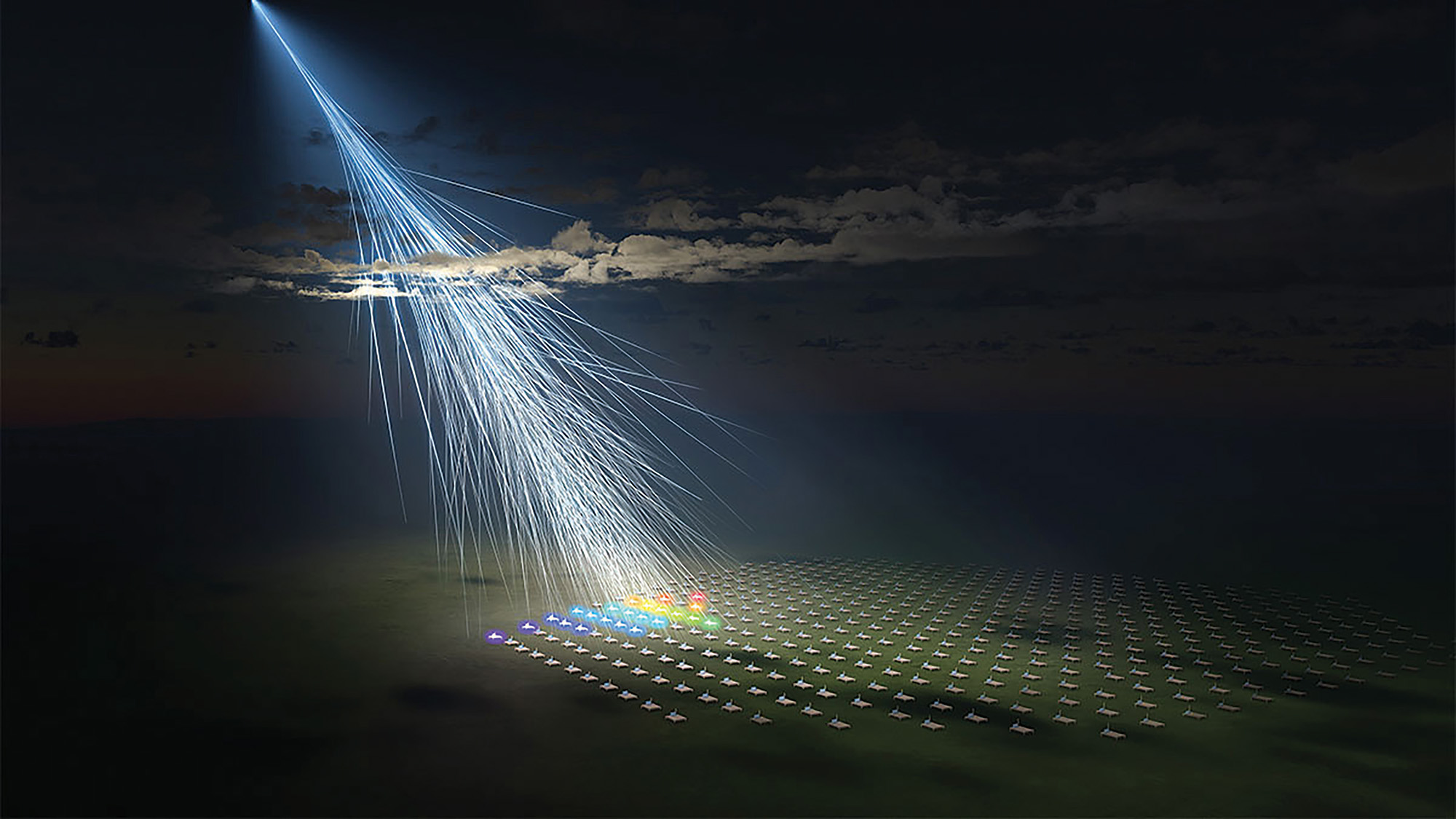Scientists have detected a rare and tremendously high-energy particle that is mystifying astronomers because it originates from an apparently empty region of space.
The particle, named Amaterasu after the sun goddess in Japanese mythology, is the second highest-energy cosmic ray ever detected. It rivals the single most energetic cosmic ray ever observed, the “Oh-My-God” particle that was detected by the U’s Fly’s Eye experiment in 1991.
It’s believed that only cosmic phenomena of unimaginable magnitude, dwarfing even the explosion of a star, can produce such energetic particles. Yet the Amaterasu particle seems to have originated from the Local Void, a desolate expanse on the fringes of the Milky Way.
“You should be able to point to where they come from in the sky,” says John Matthews, Telescope Array co-spokesperson at the U and co-author of the study. “But in the case of the Oh-My-God particle and this new particle, you trace its trajectory to its source and there’s nothing high energy enough to have produced it. That’s the mystery of this—what the heck is going on?”
With leading collaboration from the U and the University of Tokyo, the Telescope Array (which notably detected the Amaterasu particle) consists of 507 surface detector stations meticulously arranged in a square grid that covers 270 square miles outside of Delta, Utah, in the state’s West Desert.
In their observation that published in the journal Science last fall, the international Telescope Array alliance found that the rare phenomena might follow particle physics unknown to science. The Oh-My-God and the Amaterasu particles were detected using different observation techniques, confirming that while rare, these ultra-high energy events are real.
“These events seem like they’re coming from completely different places in the sky. It’s not like there’s one mysterious source,” says John Belz, professor at the U and co-author of the study. “It could be defects in the structure of spacetime, colliding cosmic strings. I mean, I’m just spit-balling crazy ideas that people are coming up with because there’s not a conventional explanation.”




Comments
Comments are moderated, so there may be a slight delay. Those that are off-topic or deemed inappropriate may not be posted. Your email address will not be published. Required fields are marked with an asterisk (*).